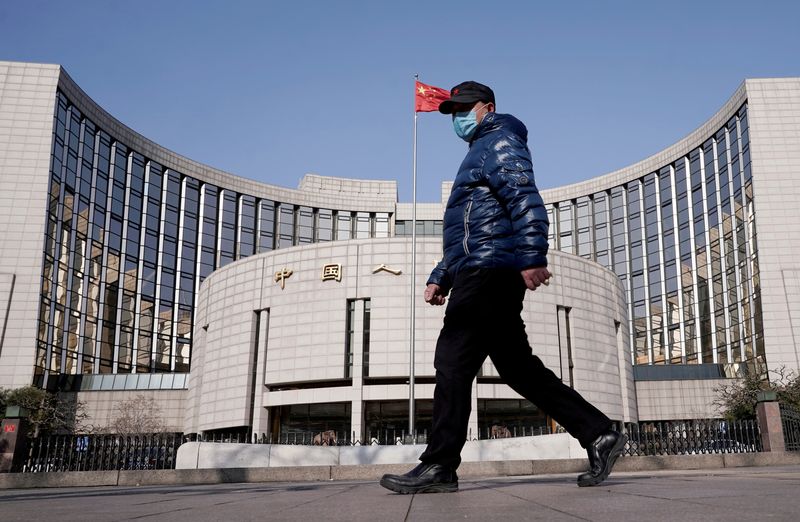SHANGHAI (Reuters) -China kept its benchmark lending rates unchanged for the third straight month on Monday, as a weaker yuan and persistent capital outflows continued to limit Beijing's ability to ease monetary conditions to support the economy.
But sluggish credit demand and a darkening growth outlook have prompted some traders and market analysts to predict a marginal reduction to the mortgage reference rate as early as next month to prop up the broader economy.
As expected, the one-year loan prime rate (LPR) was kept at 3.65%, while the five-year LPR was unchanged at 4.30%.
In a Reuters poll of 22 market watchers conducted last week, all respondents predicted no change to the one-year LPR. However, five participants expected a reduction to the five-year LPR.
The steady LPR fixings came after the People's Bank of China (PBOC) partially rolled over maturing medium-term policy loans last week and kept the interest rate unchanged for a third straight month, suggesting policymakers remained wary of stoking further yuan weakness by easing monetary conditions.
The medium-term rate, called the medium-term lending facility, serves as a guide to coming changes in the LPR.
Meanwhile, widening policy divergence with other major economies, particularly the United States, could worsen fund flows. The latest official data showed that overseas investors had sold their holdings of China's onshore bonds for a ninth straight month in October, the longest streak of outflows on record.
The yield gap between China and the United States hovered at the widest level in 15 years, and the yuan has lost more than 10% against the dollar so far this year and looks set for the biggest annual drop since 1994.
However, some traders and market analysts expect a reduction to the mortgage reference to help the embattled property sector.
"We think there's probability to lower the 5-year LPR in December due to the downturn in the property market," said Xing Zhaopeng, senior China strategist at ANZ.
Marco Sun, chief financial market analyst at MUFG Bank (China), also said there was a chance the 5-year LPR would be lowered by 10 to 15 basis points in the next few months.
The authorities have recently extended more support to property developers.

The LPR, which banks normally charge their best clients, is set by 18 designated commercial banks that submit proposed rates to the PBOC every month.
Most new and outstanding loans in China are based on the one-year LPR, while the five-year rate influences the pricing of mortgages. China last cut both LPRs in August to boost the economy.